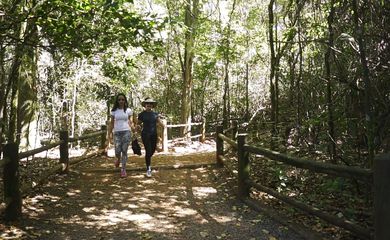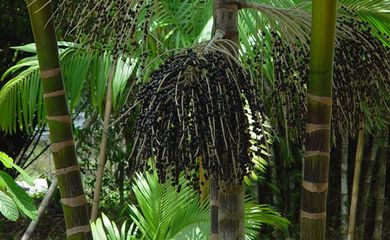Bioeconomy gains ground in Brazilian Amazon

Creating products and services that go hand in hand with the conservation and regeneration of biodiversity is the basis of bioeconomy, an economic model that continues to gain prominence in efforts to boost promoting social, economic, and environmental development. Two fruits native to the Amazon play an instrumental role in the production chain that lies behind this growth.

In the Northern state of Pará, dissatisfaction with the region’s food culture led businesswoman Ingrid Teles to come up with a way to tackle the problem of the large amount of seeds discarded every day by businesses in the production of açaí pulp. In 2017, she began conducting a study that resulted in the creation of a cosmetics company in 2022.
“It was looking at this volume of waste that I began to think up a solution that could be both a business model and a way to make a social contribution. That’s when I came up with the production of açaí soap using the seeds in a circular bioeconomy structure,” Teles recounted.
In rough terms, only 26.5 percent of açaí is edible—the rest is comprised of fiber and seeds, which are considered waste in the food chain. Added to this is the fact that Pará is Brazil’s top producer of açaí, with 93.87 percent of the national production. In 2023 alone, the harvest registered 1.6 million tons of the fruit countrywide, Brazilian statistics bureau IBGE reported.
Cocoa
Like açaí, cocoa, which is also native to the region, is abundant in floodplain soils, which makes it another powerful product for a bioeconomy model in the Amazon. The method for handling and processing it is already deep-rooted in the region’s traditional communities.
This tradition was a determining driver in the emergence of a women-led company that processes cocoa for products used in health therapies and ceremonies.
One of the partners, Noanny Maia, said she brought her mother and two sisters together in 2020 to take over her father’s business in addition to the legacy of four generations of cocoa production in the municipality of Mocajuba, in Pará.
“When we arrived in the region, we were faced with a reality of environmental degradation that had a severe impact on cocoa-producing families, with a lot of poverty and women facing vulnerability and even violence. It was no longer the abundance of my grandfather’s time,” she recalled.
Seeking to improve the living standards of neighboring families and make a positive impact on the cocoa chain, they created a company that absorbs the cocoa production of 15 families and processes the beans into full-cocoa bars, nibs (less processed beans), and granola, as well as making jelly, candles, and foot soaks. “We do what we can to bolster the vertical integration of cocoa production as much as we can,” said the businesswoman.
Rise to prominence
The two ventures come under the National Bioeconomy Strategy, launched early in June by a presidential decree, which demonstrates the Brazilian government’s interest in strengthening public policies that favor this economic system. The topic is also discussed as part of an initiative proposed during Brazil’s participation in the G20.
In the Amazon, bioeconomy had been taking hold long before governments and international organizations debated the subject. According to Rubens Magno, managing director of the Micro and Small Business Support Service (Sebrae) in Pará, the use of natural resources associated with preserving the forest is an ancient practice among the traditional peoples of the Amazon.
“These ancestral peoples have been doing this for many years, but they often don’t realize they have this knowledge, and they also don’t realize the value of the Amazon and the value outsiders place on the forest,” he said.
The market
With market projections that could reach $8.1 billion a year by 2050 in the Amazon alone, bioeconomy is making headway particularly among micro and small entrepreneurs. These strides, Macro argued, come also as a result of the establishment of a Sebrae bioeconomy center in the city of Santarém, also in Pará, which is responsible for taking many of these entrepreneurs out of the informal sector.
On Thursday, the institution unveiled a platform to integrate all bioeconomy players—researchers, government institutions, investors, and entrepreneurs.
“We’re getting different players to talk and share their knowledge in a cross-sectional way, in a bid to empower everyone involved and help startups to grow, investors to participate, and governments at all levels to see this potential,” he explained.
The goal of the 30th United Nations Climate Conference (COP30), to be held in November 2025 in Belém, is to add value to natural resources while preserving the forest through bioeconomy, Magno stated. “We want to show the power of the forest to the world, with bioeconomy as our strength,” he concluded saying.






